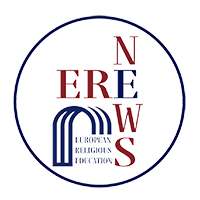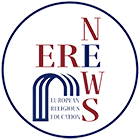Francia
a cura di F. Carta
La scuola e le religioni
La scuola in Francia è gratuita e aperta a tutti i cittadini indiscriminatamente. L’obbligo scolastico va dai 6 ai 16 anni di età. La laicità è un principio fondamentale del sistema scolastico: alunni e insegnanti non possono fare proselitismo né indossare segni visibili della propria fede religiosa. Inoltre, i docenti devono dar prova di neutralità in riferimento alle loro opinioni politiche, filosofiche e religiose.
Denominazione della materia
L’insegnamento delle religioni è chiamato precisamente “enseignement des faits religieux” e si contraddistingue per essere un insegnamento laico. I “fatti religiosi” sono definiti come «riti, testi fondatori, costumi, simboli, tracce materiali o immateriali, manifestazioni sociali, opere di ambito religioso […] che hanno avuto (o hanno ancora) un’influenza più o meno forte sulla società antica, medievale, moderna e contemporanea»[1]. Les faits religieux che si studiano a scuola sono, dunque, elementi culturali (objets de culture) chiaramente distinti dagli elementi alla base del culto (objets de culte)[2].
Collocazione nei programmi scolastici
L’insegnamento dei fatti religiosi non costituisce una materia vera e propria all’interno dei programmi scolastici, ma un insegnamento trasversale a tutte le materie. Sono particolarmente coinvolte le discipline umanistiche come storia, geografia, lettere, storia dell’arte, educazione musicale, arte e filosofia.
Finalità dell’insegnamento
Il fine di ciascun docente è quello di insegnare a percepire la pluralità dei sistemi di pensiero e di rappresentazioni del mondo contestualizzando le proprie convinzioni nel rispetto di quelle degli altri.
Le competenze che gli alunni dovranno possedere sono:
- saper analizzare un racconto, un’opera o un avvenimento che ha al suo interno dei riferimenti religiosi seguendone gli effetti nell’attualità
- saper distinguere opinioni, credenze, saperi diversi
- partecipare ad un dibattito critico in una società pluralista[3].
Per approfondire
Sito del Ministero dell’educazione nazionale:
- https://eduscol.education.fr/1623/l-enseignement-des-faits-religieux
- https://www.reseau-canope.fr/les-valeurs-de-la-republique/enseignement-laique-des-faitsreligieux.html
Vademecum ufficiale sulla laicità a scuola: https://eduscol.education.fr/document/1609/download
Esempio dei contenuti dell’insegnamento dei fatti religiosi proposti ai bambini dagli 8 ai 10 anni: https://www.reseau-canope.fr/notice/tu-sais-tu-crois.html
Nel corso degli anni sono state commissionate alcune indagini a livello nazionale:
Nel 2002, sull’insegnamento del fatto religioso nelle scuole (rapporto Debray): https://www.education.gouv.fr/l-enseignement-du-fait-religieux-dans-l-ecole-laique-12851
Nel 2014, sui segni e le manifestazioni di appartenenza religiosa nelle scuole (primo rapporto Obin): https://www.education.gouv.fr/les-signes-et-manifestations-d-appartenance-religieuse-dans-les-etablissements-scolaires-8888
Nel 2021 sulla formazione del personale scolastico alla laicità e ai valori della République (secondo rapporto Obin): https://www.education.gouv.fr/media/89897/download
France
by F. Carta
Schools and religions
Schooling in France is free and open to all citizens indiscriminately. Compulsory schooling runs from the age of 6 to 16. Secularism is a fundamental principle of the school system: pupils and teachers cannot proselytise or wear visible signs of their religious faith. In addition, teachers must show neutrality with regard to their political, philosophical and religious opinions.
Subject name
The teaching of religions is called precisely “enseignement des faits religieux” and is characterised by being secular. “Religious facts” are defined as “rites, founding texts, customs, symbols, material or immaterial traces, social manifestations, religious works […] that had (or still have) a more or less strong influence on ancient, medieval, modern and contemporary society”. Les faits religieux that are studied at school are, therefore, cultural elements (objets de culture) clearly distinct from the elements at the basis of worship (objets de culte).
Place in the school curriculum
The teaching of “religious facts” does not constitute a subject in its own right within the school curriculum, but is taught across all subjects. The humanities such as history, geography, literature, art history, music education, art and philosophy are particularly involved.
Teaching objectives
The aim of each teacher is to teach students to perceive the plurality of systems of thought and representations of the world, contextualising their own beliefs while respecting those of others.
The skills the pupils should possess are:
– to be able to analyse a story, a work or an event that has religious references within it and to follow its effects in the present day
– to distinguish different opinions, beliefs and knowledge
– to participate in a critical debate in a pluralist society.
For further information
Ministry of National Education website:
- https://eduscol.education.fr/1623/l-enseignement-des-faits-religieux
- https://www.reseau-canope.fr/les-valeurs-de-la-republique/enseignement-laique-des-faits-religieux.html
Official vademecum on secularism at school:
https://eduscol.education.fr/document/1609/download
Example of the contents of the teaching of religious facts proposed to children aged 8 to 10:
https://www.reseau-canope.fr/notice/tu-sais-tu-crois.html
Over the years a number of surveys have been commissioned at national level:
In 2002, on the teaching of religious fact in schools (Debray report):
https://www.education.gouv.fr/l-enseignement-du-fait-religieux-dans-l-ecole-laique-12851
In 2014, on signs and manifestations of religious affiliation in schools (first Obin report): https://www.education.gouv.fr/les-signes-et-manifestations-d-appartenance-religieuse-dans-les-etablissements-scolaires-8888
In 2021 on the preparation of school staff for secularism and the values of the République (second Obin report): https://www.education.gouv.fr/media/89897/download
[1]https://eduscol.education.fr/1623/l-enseignement-des-faits-religieux.
[2]https://www.reseau-canope.fr/les-valeurs-de-la-republique/enseignement-laique-des-faits-religieux.html.
[3]https://www.reseau-canope.fr/les-valeurs-de-la-republique/enseignement-laique-des-faits-religieux.html

